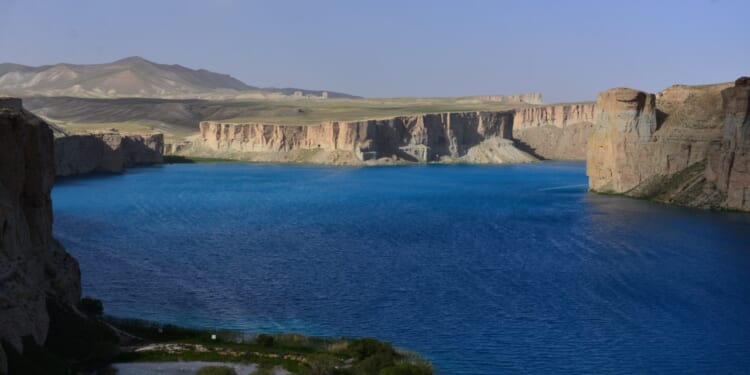The Taliban is flexing its hydrological muscles to build leverage against its neighbors.
Afghanistan is often described as landlocked, but in hydrological terms, it is upstream of two major states. Its rivers descend toward Pakistan in the east and Iran in the west, feeding the Kunar-Kabul-Indus and Helmand-Hamun basins. Geography has made Afghanistan a gatekeeper of water—a form of leverage that the Taliban now understands more clearly than any previous government. While the regime lacks international recognition or a viable economy, it controls the headwaters that two stronger neighbors cannot replace.
In 2025, Taliban officials announced plans to construct new dams along the Kunar River, which originates in Pakistan’s Hindu Kush as the Chitral River, crosses into Afghanistan, and then returns to Pakistan to join the Indus. In late October, The Economic Times reported that the Taliban intends to build these structures “as soon as possible,” using Afghan firms and national funds. The project’s technical prospects are uncertain, Afghanistan’s finances are constrained, and few foreign contractors will work under Taliban supervision, but the political signal matters more than the engineering.
Islamabad recognizes that even modest upstream storage can impact irrigation and hydropower in Khyber Pakhtunkhwa and downstream reservoirs, such as Warsak and Mohmand, particularly during the low-flow months from October to April. Pakistan and Afghanistan have no treaty governing these shared rivers. There is no equivalent of the Indus Waters Treaty, no joint commission, and no binding data exchange. Even the 1997 UN Convention on the Law of the Non-Navigational Uses of International Watercourses, which states that countries must share rivers fairly and avoid causing serious harm to others, has not been ratified by either Afghanistan or Pakistan. Consequently, there’s no binding legal framework. That vacuum gives the Taliban freedom to act and leaves Pakistan with little recourse beyond diplomacy.
New Delhi has expressed interest in supporting Afghanistan’s broader water-management efforts, but there is no evidence of Indian involvement in the Kunar project itself.
Water thus joins the long list of grievances between the two countries: border skirmishes, refugee expulsions, and militant sanctuaries. Even if Afghanistan never builds a single dam, its power lies less in construction than in the threat of it. Every proposed project becomes an instrument of pressure, turning the Kunar River into a geopolitical extension of the Durand Line dispute.
Yet Afghanistan’s control of headwaters does not exempt it from the same vulnerabilities. The country is already facing the full impact of climate change. Average temperatures in Afghanistan have risen nearly 1.8°C since the 1950s, while precipitation has declined by as much as 40 percent in some basins. Glaciers in the Hindu Kush are retreating, rainfall is becoming increasingly erratic, and a significant portion of surface water now evaporates before reaching downstream users.
Despite two decades of international aid following the 2001 invasion, the country failed to rebuild its water data infrastructure or modernize irrigation. Hundreds of gauging stations destroyed during earlier wars were never restored, leaving Afghanistan without reliable hydrological records. The absence of consistent monitoring makes both planning and diplomacy guesswork. Cropping patterns have compounded the problem: farmers continue to cultivate water-intensive crops such as rice, melons, and opium poppy in semi-arid zones. Under Taliban rule, these trends persist, eroding Afghanistan’s own water security even as it gains leverage over its neighbors.
For Pakistan, the challenge is structural. Much of its irrigated agriculture in the northwest depends on inflow from Afghanistan’s tributaries. Reduced discharge from the Kunar or Kabul rivers would lower productivity in Peshawar and Charsadda, where hydropower projects at Warsak and Mohmand already operate below capacity due to sedimentation and seasonal variability. At the political level, water shortages risk inflaming tensions in Khyber Pakhtunkhwa, a province that remains the heartland of opposition parties and militancy. In this sense, Afghanistan’s water management has domestic political consequences for Pakistan that extend far beyond the Indus basin.
To the west, a different but equally complex confrontation is unfolding. The Helmand River, Afghanistan’s largest, rises in the central highlands and ends in Iran’s Hamun wetlands in Sistan-Baluchistan province. The 1973 Helmand Water Treaty guarantees Iran 22 cubic meters per second of flow in “normal years” and allows it to purchase an additional 4 m³/sec when water is abundant. The agreement lacks an enforcement mechanism and relies on joint monitoring and data-sharing systems that have not functioned for decades.
Iran accuses Afghanistan of withholding Helmand River water through control of the Kajaki and Kamal Khan dams. Afghan officials respond that Iran already receives its due share in normal years and that shortages in Sistan result from domestic mismanagement, over-pumping, inefficient irrigation, and water-intensive crops. Neither side can prove its case. The four Chahnimeh reservoirs Iran built in the 1980s to collect Helmand inflow now receive little water. Domestic inefficiency has deepened the crisis: Iranian officials increasingly warn of a nationwide water emergency while blaming the Taliban’s upstream dams.
When Iranian and Afghan border guards exchanged fire near Nimruz in May 2023, the clash occurred during, not because of, the water dispute. Subsequent investigations pointed to a patrol confrontation rather than a planned escalation, yet the timing reinforced public perception of a “water war.” The episode highlighted how quickly environmental disputes can merge with nationalism on both sides.
The environmental cost is visible from space. The Hamun wetlands, once among the Middle East’s largest freshwater systems, have largely dried up, as documented by the USGS. Dust storms from the exposed lake-bed have become a public-health hazard across both countries. In some analyses, climate change is identified as a multiplier that will prolong the Helmand crisis for decades. Even with normal rainfall, higher evaporation and declining snow-pack reduce flow predictability, aggravating mistrust between Tehran and Kabul.
Inside Iran, the consequences are now deeply political. Chronic water shortages have accelerated migration from Sistan-Baluchistan, one of the country’s poorest provinces. Iranian authorities have linked rising rural displacement to the Taliban’s dam policy, framing it as both an ecological and a security threat. Tehran has deployed more border guards and invested in canals to divert what little water remains, costly efforts that cannot compensate for upstream control.
Historically, Afghanistan’s upper-riparian position has been a constant in regional politics. Previously, concerns had been raised in Tehran over Afghanistan’s expanding control of Helmand River flows. The difference today is intent: the Taliban treats upstream control less as a development goal than as a means of political leverage.
Both the eastern and western basins reveal the same structure, upstream control as political capital. In the Kunar basin, the stakes are strategic, tied to power and irrigation. In contrast, in the Helmand basin, they are ecological and humanitarian, measured in terms of livelihoods and survival rather than influence. In both basins, Afghanistan exercises disproportionate influence over its resources. Its control of headwaters allows it to shape downstream outcomes even without large infrastructure.
The Taliban benefits from ambiguity. It can announce new projects to assert sovereignty, cite drought to justify withholding, and alternate between conciliation and defiance. Without reliable hydrological data, Iran and Pakistan cannot challenge those narratives. The regime’s isolation removes incentives for transparency, as international pressure has limited reach.
Iran and Pakistan are adapting separately rather than cooperatively. Tehran continues to invoke the 1973 treaty but is investing in internal diversions and groundwater extraction to stabilize Sistan. Pakistan is accelerating dam construction in Chitral to regulate the Indus tributaries and reduce seasonal dependence. These are palliative, not permanent, measures.
Managed instability is the result. Neither neighbor can coerce the Taliban into compliance, and the Taliban has no reason to institutionalize cooperation. Environmental deterioration in both basins is expected to continue. The Helmand delta will keep retreating, the Hamun lakes will shrink further, and dust and displacement will spread. On the eastern front, erratic discharge in the Kunar and Kabul rivers will exacerbate Pakistan’s water insecurity.
Afghanistan’s geography remains its most reliable form of leverage. For a government lacking recognition and resources, the control of rivers serves as a substitute for conventional power. Each announcement of a dam, each argument over flow, reasserts the Taliban’s relevance. The rivers that flow from its mountains sustain two neighbors but answer to neither. This is Afghanistan’s enduring advantage.
About the Author: Fatemeh Aman
Fatemeh Aman has written on Iranian, Afghan, and broader Middle East affairs for over 25 years and advised US and non-governmental officials. A former non-resident fellow at the Middle East Institute and senior fellow at the Atlantic Council, a writer, producer, and anchor at Voice of America, and a correspondent at Radio Free Europe/Radio Liberty, her work has appeared in Jane’s Islamic Affairs Analyst, Jane’s Intelligence Review, and the Stimson Center’s Middle East Perspectives. Follow her on X: @FatemehAman.
Image: Ishaq Ali Ani / Shutterstock.com.

















